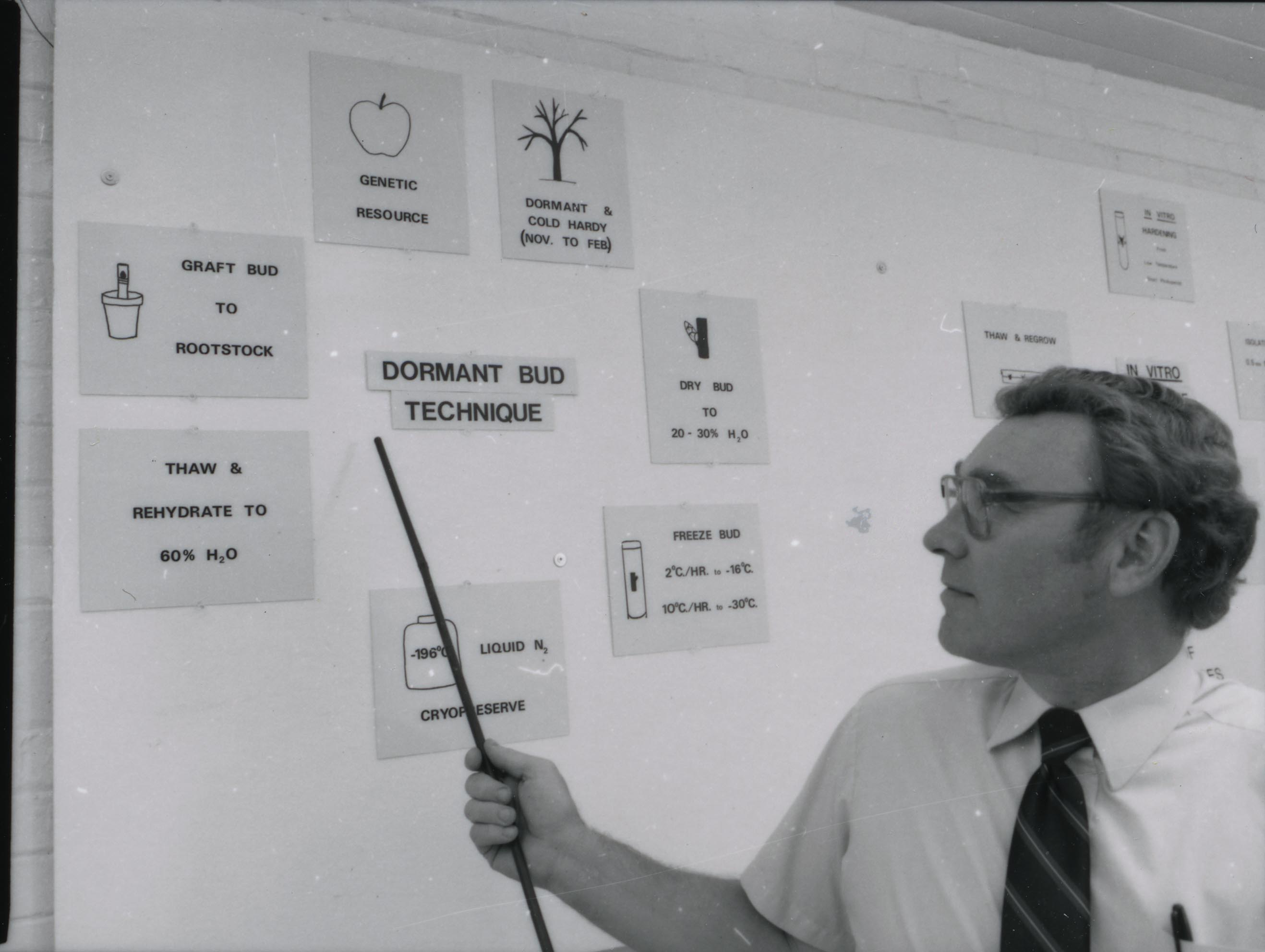As head of the department, Dr. Stushnoff encouraged the breeding of cherries and apples and obtained funding for the native fruit program. He developed an innovative new technology to preserve dormant buds of apple germplasm for long-term storage in liquid nitrogen. He also worked on new methods of increasing potato seed production.
Dr. Stushnoff will be presenting a talk on “Pivotal Research and Innovation: Advance Fruit and Vegetable Science” on November 23 from 3pm – 4pm. Now retired, Dr. Stushnoff will bring his perspectives from a distinguished career in fruit and vegetable physiology, breeding and production.
When asked about when he first became interested in plants he wrote:
“I grew up on a farm where successful growth of cereal and forage plants often determined annual income, if any. My mother had several intriguing skills for growing plants under harsh prairie conditions, including starting cold sensitive and long season transplants such as tomatoes, peppers, and cabbage, using an animal manure heat generating hot bed/cold frame. I also recall my grandfather talking about fruit growing in a mild climate of The Caucuses Mountains, his home before coming to Canada in the late 1890s.
My first “commercial” venture was to grow and sell potatoes on our farm near Vanscoy, SK. After that it was a matter of choosing plants vs animals as a major during my BSA degree at the U of S, followed by research on chromosome cytogenetics with the Patterson hybrid lilies for my NRC sponsored Master’s. I then conducted breeding research with USDA on high bush blueberries at Rutgers University for my PhD. This was followed by a career in fruit breeding and cold stress physiology at The University of Minnesota where my breeding program developed and named five apple cultivars, including ‘selecting Honeycrisp’ from a seedling population, named after I left the U of MN. Now Honeycrisp is one of the leading apple cultivars grown in the US, and several other countries. I also developed and named four blueberries, two raspberries, two grapes and one pear.”

Dr. Cecil Stushnoff
This week we welcome back Dr. Cecil Stushnoff, the head of the University of Saskatchewan Horticulture Department from 1982 – 1989.